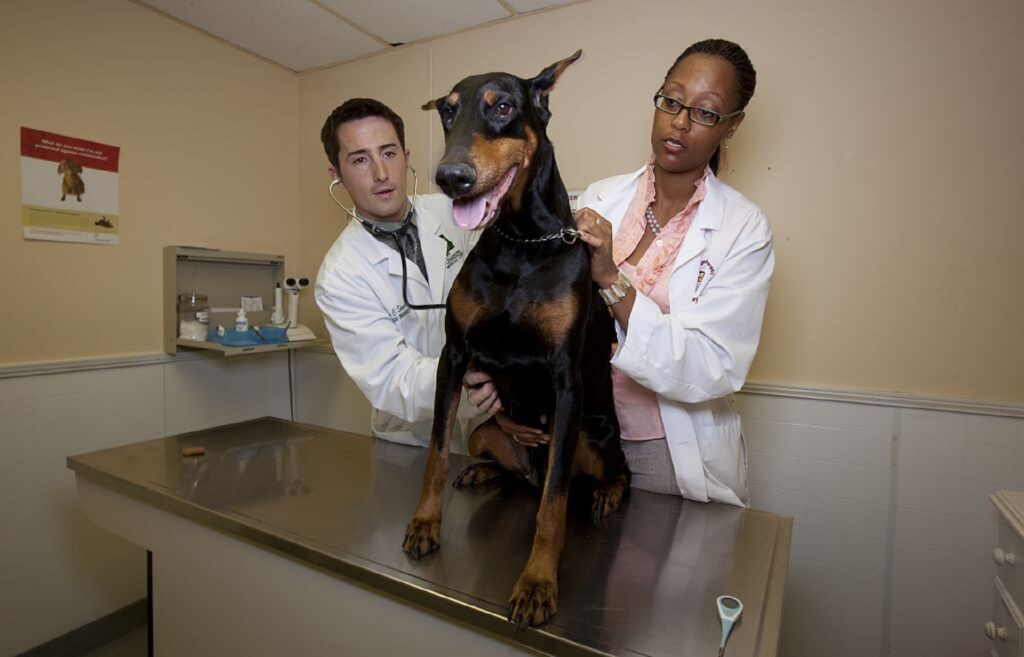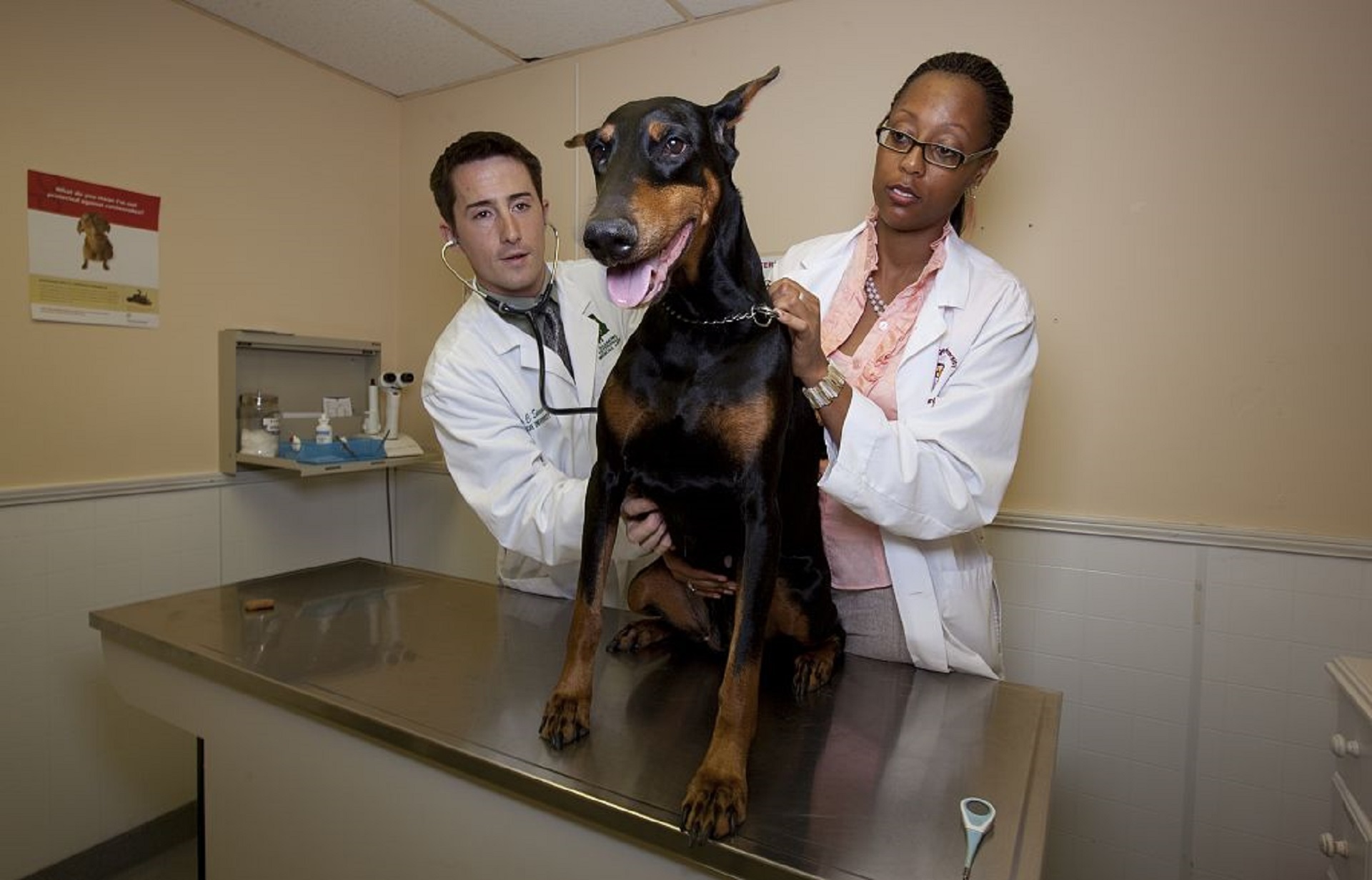Why Every Veterinarian Should Consider Practice Ownership

To own or not to own? That is the question. Let’s look at the reasons a veterinarian may consider veterinary practice ownership.
First, being the boss has benefits. You get to control your own destiny! Your success is determined by your own abilities and faculties. This can be exciting and terrifying at the same time. You are in charge of the medicine, the finances, the culture, team members, schedules, and more. Being in charge gives you the responsibility and the freedom.
Next, as a practice owner, you have the ability to make more money. Annually, you have access to income that is not available to an associate. If you are in the driver’s seat, you get the say in how and where the money is spent. Depending on how the practice is operated, generally the income for the new owner comes from a few different streams.
Most of the time the new owner veterinarian is still seeing clients and entitled to the income they are generating for their work as a veterinarian. The owner is also entitled to a management fee as well as a return on investment for the business.
If real estate is involved, rent is another source of income. These sources increase the income available to the practice owner versus only having access to an associate salary income.
Many veterinary owners fail to recognize and manage these different roles separately, and instead lump all of their income into one stream, thus making it hard to decipher how each role should be managed for maximum profitability of the business.
Wealth Creation
One part of the story that tends to not get as much attention in the “own or not to own” discussion is wealth creation. One of Webster’s definitions of wealth is “all property that has a money value or an exchangeable value.” We typically think of millionaires as those who have a million dollars in cash in their bank accounts.
In reality, millionaires are measured by having $1,000,000 in net worth (meaning their assets minus their liabilities is over a million dollars), not necessarily that amount in cash. Assets are possessions of value that you own, and liabilities are debts or obligations that you owe.
Therefore, owning a practice affects your net worth by coming into play as an asset. And while, yes, a large liability often comes with that, the beauty lies in how the income generated by the business is paying down the liability each month and is helping build your net worth. Investing in veterinary practice ownership allows for significant opportunity (over being an associate) to bolster your personal balance sheet.
Typically, you are told to invest in the thing you know best. Investing in the stock market involves owning a small piece of a business in an industry you may or may not know much about.
Why not invest in veterinary medicine since it is what you know best?
Money, or a lack of it, often holds people back. Embarking on a career as a veterinarian is not cheap and involves a large investment of money. Then, the barrier for veterinarians to invest in their own practices is a much higher dollar amount than buying a small piece of a profitable company in the stock market.
With recent graduates having high student debt and often little money to put down, investing in a practice may seem inaccessible. The amount of money needed to buy a practice often dwarfs even the large student loan debt balances that veterinarians have accrued.
Starting a practice may seem more accessible since it often has a lower total cost to start. However, the lengthy ramp-up period before breaking even can make start-ups unfeasible for recent grads as well.
Debts
Student loan debt causes enough challenges and burdens. That makes it easy to see why veterinarians find it difficult to imagine additional debt to buy a practice as part of the solution. However, loans to purchase a business have fundamental differences from those that veterinarians may have previously dealt with.
Most consumer loans are paid for with income from a separate source. Yet, a loan to purchase a veterinary practice is approved based on historical or projected income. That income is expected to pay for the debt being taken on. Therefore, the funds from the loan are purchasing an asset that generates income to pay back the loan.
This is the main difference from a personal home mortgage. With a home mortgage, the debt is supported or paid for by the individual’s income from a separate job or income unrelated to the house itself.
For practice acquisition, the practice must have historical performance demonstrating the ability to generate enough earnings each year to cover the monthly loan payments, a reasonable salary for the new owner, and a cushion for savings.
Therefore, the buyer’s financial position, the practice’s financial performance, and the purchase price are key components in determining the possibility of veterinary practice ownership. For start-ups, the financial projections must demonstrate that within a reasonable time period the new practice will be able to financially support the debt and the new owner in the same way.
So, we have a highly responsible, skilled professional with low liquidity (predominantly due to obtaining the education to become this responsible and skilled professional) wanting to purchase a valuable income-generating but intangible asset. When examining this loan on paper using a traditional lending lens, it can look like a risky loan.
While owner financing has and will likely always be around in this industry, third party lenders have become familiar with the challenges and opportunities that this scenario creates within the veterinary practice succession landscape. A collateral-based lender lends on a percentage of the tangible assets, but a cash flow lender will analyze the cash flow of the practice to determine the amount of debt the business can support.
When the information is properly analyzed and understood, even loans that look risky on paper can be sound lending decisions with the right structure. Lenders may assess and structure loans differently based on their credit policy.
Transitions of Practice Ownership
Transitioning veterinary practice ownership enables young veterinarians as well as longtime associates to become owners. It also gives retiring vets a chance to realize the value of their practices. Most of the value of a healthy practice is based on the ability to turn a profit.
This is an intangible asset as the ability comes from the practice’s reputation, operations, client base, and employee relations. Being intangible, this is deemed the “goodwill” or “blue sky” of the practice and represents the dollar value set for how valuable the practice is.
The practice’s tangible assets include inventory, furniture, fixtures, and equipment. It is important to work with a third party who understands veterinary space. This ensures the correct value of the practice and an accurate price.
For a good transaction to occur, the seller needs to decide early in the succession planning process what is for sale, just the practice or the practice plus real estate, and the selling price for each. For purchases that just include the practice but not the real estate, the loan term could be for up to 10 years.
If both the practice and real estate are purchased and the real estate cost makes up the majority of the loan proceeds, the loan term could be extended up to 25 years. Spacing the loan payments over 25 years allows for lower monthly payments, possibly making the loan easier to repay.
The loan process will require having an appraisal done to value the real estate. Additional purchases such as new equipment or updates can be included in the loan or purchased later. The practice purchase price will be based on several sources including asset values, annual revenues, multiples of earnings, and other intangible assets.
With proper advance planning, the sale of the practice and transition period can be smooth and successful.
Determining Factors for Credit Decisions
When making the credit decision, the lender will examine the entire financial landscape, the business’s finances, and the buyer’s personal finances. The process for obtaining a practice can look different depending on individual circumstances.
To determine the possibility of financing, the lender will assess whether this business will be able to support the buyer and the new debt. To make an assessment, the lender will need information from the practice and the buyer. The practice’s prior three years of tax returns and interim profit and loss statement along with the balance sheet statements from the beginning of the fiscal year must be supplied.
The lender will also need a personal financial statement, resume, and three years of personal tax returns from the potential buyer. The amount of debt needing to be supported is primarily determined by the sell price and the buyer’s down payment. However, working capital and soft costs may or may not be included in the total loan amount as well.
The personal debt obligations of the buyer will determine the annual salary necessary from the veterinary business ownership. While determining the prequalification status, the buyer’s credit report is pulled as an indication of the individual’s history of owing and paying back borrowed money.
The lender uses it to show the individual’s past performance in repaying debt and their current debt obligations. How someone manages their personal credit is typically a good indicator of how they will manage the business’s credit. Part of the analysis will also include looking at the payments owed to other creditors, including a mortgage payment, any car payments, student loan payments, etc.
The practice needs to support the new owner’s salary with at least a 50% debt to income ratio. Therefore, personal debt obligations influence the size of practice that can be purchased. Interestingly, an individual could qualify for a higher-priced practice over a lower-priced practice because the latter may not earn enough to support the new owner’s debt and lifestyle.
Veterinary student loan debt plays a role in the financing equation. Obligations on the credit report help calculate a minimum salary estimate. Generally, the salary received as an associate is higher than that calculated for the 50% DTI, which includes the new owner’s minimum student loan obligation.
Therefore, the amount calculated into the cash flow analysis for the loan analysis can be similar to what they were making as an associate or close to the national average for a veterinary associate. Using this number for the analysis provides a conservative estimate showing the new owner will be able to continue to maintain their current lifestyle as an owner, along with the hopes that they will earn more.
Ultimately, the lender wants to know that veterinary practice ownership will bring in enough money to cover the business expenses, business debt, and new owner’s salary. The lender also needs to be comfortable in the business’s historical financial ability to be repeated with the new owner in the driver’s seat.
Once the loan has been approved, it moves into the closing stages. At this point, the legal documentation and contracts are drawn up, acquired, and signed. On the day of closing, money changes hands so that the transfer of ownership is official.
Successful Transitioning for the New Owner
Transitions are successful with good communication and transparency between both parties. Questions and information need to be discussed during the transition process to ensure the continued success of the practice.
Will the seller continue to work at the practice after the transfer of ownership has been finalized?
What will the seller’s non-compete agreement involve?
How will clients be introduced to the new owner?
When will the staff be informed on the sale of the practice?
The staff is a key part of the practice and plays an important role in repeating the same financial results for the new owner. It is important for the team to have a good transition with the new owner. Losing key associates and valuable team members can hurt the performance and value of the practice.
It is common for the staff to have initial concerns with a new owner. Although fresh eyes can lead to practice improvements, people tend to resist change. It is usually in the best interest for the new owner not to radically change the experience for staff and longtime clients until he or she has gained their trust. Finding a doctor and practice that operates under a similar style of medicine will aid the success of this transition.
Acquiring a veterinary practice requires proper planning and patience throughout the process from selecting the right business plan to securing financing and transferring ownership. Although veterinary practice ownership requires hard work, it is one of the best ways to maximize your degree and build net worth.
At LenDRgroup Consulting, we care about your practice’s long-term success. Whether you need practice financing or business consulting, we can craft a customized plan to fit the unique needs of not only your practice but also your career.
We bring a lending platform of 300+ dental and healthcare-specific lenders, and we built this network with the purpose of helping dentists, veterinarians, and physicians. We want you to achieve your dreams of practice ownership while eliminating the obstacles associated with practice financing.
To date, we have helped hundreds of medical professionals expand and grow their practices. LenDRgroup Consulting recognizes and understands the needs of your business. We can offer guidance to help avoid costly mistakes. So, let’s get started. Contact us today to schedule a one-on-one consultation.



